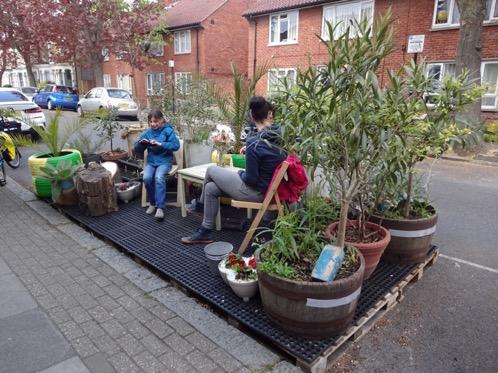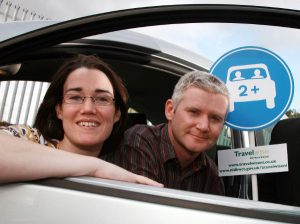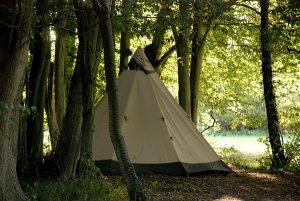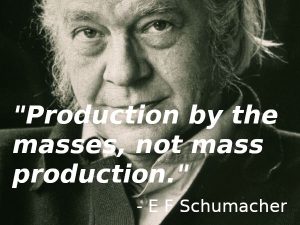A group of volunteers are bringing the parklets movment to the UK – creating much needed social and green space on our streets. Hear their story.
Car parking on streets is pervasive. Parked cars are not dangerous and not polluting compared to a moving car. What damage could they be possibly doing? “We only use our very old car once or twice a year – the rest of the time it rests harmlessly outside our home, not injuring a soul”, say my well-meaning car owning friends, justifying their use of cheap or free road space.
Car parking is so much the norm, we have forgotten what our streets could be like, full of life and activity
The Centre for London produced an excellent study Reclaim the Kerb: The Future of Parking and Kerbside Management, which described the significant problems caused by on-street private car storage:
- Private on-street car storage takes up a significant amount of public space There are an astonishing three million vehicles in London at the moment (one for every three people), and almost half of these (43%) are parked on our public streets, taking up the equivalent of ten Hyde Parks in size. These cars are parked on average for 95% of the time, according to the RAC. If even a tenth of these unused cars were shared and used rather than just parked you get one Hyde Park size of public space for greening, socialising, playing, cycle parking, working, growing food, and also providing useful space for deliveries, pick up and drop off.
- Car owners do not even cover the operating costs of providing public parking space for their private vehicles, let alone market rental value of spaces Car owners (who are likely to be better off) get to store their large and dangerous items in public spaces at highly subsidised costs, not even covering the administrative costs of managing the bay let alone the rental value of the land they park on. Car parking spaces have a market value of up to 10 times higher than the annual cost of a resident’s permit.
- The provision of free and subsidised car parking encourages car ownership and car driving. While restriction of driving space has meant people are driving less, ownership of cars has not fallen as much. The number of driving trips has fallen by 23% in London since 2013/14 but the rate of car ownership only fell by 4% over that time and remains high at 56% of households, (with much lower ownership rates in inner London).
Car parking spaces are just not available for non-car use
The use of our streets for subsidised or free private car parking is even more jarring when you consider that non-car-owning households in inner London are double the number of car owning households.
It is expensive and complicated to get permission to use a car parking bay for a non-car use (parking suspension) for a parklet or a community event.
Notice has to be given days or weeks in advance. The local neighbourhood has to be ‘consulted’ for their views on the ‘event’. ‘Support’ for the ‘alternative’ use of a single car parking bay has to be demonstrated via a list of signatures and letters, and often public liability insurance of £5 million cover is required for the few hours of alternative use. Meanwhile a visitor car parking permit can be bought online for 33p for a whole day.
The arrival of parklets on our streets
Parklets began as guerrilla activities in San Francisco in 2005, when urban activists fed parking meters and created seating areas in car parking bays that were rapidly occupied and enjoyed by people. Parklets, the idea of using a car parking bay as a seating and green area, spread across the US outside bars and cafes.
THe UK eventually picked up on this trend and in 2015 Hackney was the first council to build commercial parklets. The council was careful to reassure car owners that parklets were no threat to them, and that these would be installed only on ‘redundant’ and ‘unused’ car parking bays.
These were amazing and popular. Due to their expense, they were built slowly at one parklet a year or every two years, with three built in Hackney before lockdown.
The COVID lockdown saw a small shift in attutide as it became more important than ever to encourage and allow outdoor activities and socialising. The Ministry for Levelling Up, Housing and Communities made it easy for commercial food and drink premises to acquire a ‘pavement licence’ and spread seating onto the footway or roadway. Parklets on our streets spread rapidly during lockdown in the form of outdoor temporary ‘streateries’, along with more permanent council provided parklets.
Of course. here was resistance to the proliferation of parklets, seen as a threat to car parking
What about community and residential parklets?
Residents who want to sit and socialise outdoors have no means of gaining permission or priority over car parking to do so. Community or residential street parklets are not permitted except in a handful of boroughs.
It is not permitted to meet friends outdoors on the street (without lengthy advance permission and huge ‘parking suspension’ costs)
Any parked car has priority over children wanting to play in a parking space
My role in this began a few years ago, as I felt that non-car owners should be allowed to pay for a parklet permit in the same way that car owners are allowed. This was a tiny act of resistance against the ubiquity of car parking on our streets. In the wider scheme of things, on-street car parking should be reduced to a handful of Blue Badge and car club spaces, and freed up space used for greening and community use.
I felt that a bottom up, community led parklet programme would allow people to invest in their public space in a creative way, with no loss of parking revenue and with minimal local authority input.
After applying for and being duly turned down for a parking permit in 2017 (as a bench is not allowed a parking permit), I felt I had no option but to resort to direct action to show how a parklet could be successfully created by a lay person and how it could potentially transform a street.
My bay was cheap and cheerful, flamboyant and colourful. I put up a big sign inviting people to park themselves there. The parklet was very popular in the few weeks it remained before being evicted by the Council.
Even though the bay was removed, the popularity of the idea led the very progressive Hackney Council to launch the first ever community parklet permit scheme in the UK in 2018. Eight community parklets were applied for and built on Hackney’s residential streets since then.
Community parklets creating green space in London
Following the example set up Hackney in 2018, Waltham Forest and Hounslow Council in London have launched community parklet permit systems in September 2022. A wonderful community parklet was built in Waltham Forest that featured on BBC Earth’s Instagram Feed.
Quite a few London boroughs including Lambeth and Merton have removed popular local guerilla parklets including this charming one on Rattray Road that featured as a venue on Google Maps (read the 21 reviews here) and generated a huge but sadly unsuccessful campaign for its retention.
Can parklets creating green spaces on our streets make us happier?
The evidence suggests yes!
- Community parklets provide opportunities for casual social interaction for people who do not necessarily want to visit a shop or a café.
- Having a place to gather or just sit for a while on a street, even if it is just a small hub, provides opportunities for multiple casual interactions.
- All time spent outdoors seeing other people reduces loneliness, even if it just a smile, a nod, or a wave.
- Parklets encourage this interaction on a street between neighbours and the wider community.
Not only creating green spaces, parklets can also provide opportunities for active social engagement. The process of going out, and looking after plants and gardens, provides opportunities for active and casual social interaction. Maintaining parklets is in itself an activity that provides a sense of self-worth and contributing to the community, more so than a private allotment.
The few community parklets on residential streets that have been built have proven to be huge social successes, documented by the individuals and communities that set them up. Guerrilla parklets are even more successful than permitted ones.
There are many reasons for this popularity of small intimate community outdoor spaces which have been written about by urban designers such as the well-known Danish architect Jan Gehl.
Gehl, says in Cities for People: “The battle for quality is on the small scale. It is on the small scale, in the 5km/hr (3mph) urban landscape that people encounter city life and other people close up.
“The principle of putting small spaces into a larger scale is a method of providing human scale. People can rest, wait and socialise in an intimate space while having an overview of the street”.
Green spaces created by parklets provide a link to nature
Along with the nourishing, helping warmth of other people, we also need the healing touch of nature which can be provided by parklets. Many people living in inner cities in apartments do not have private gardens or even balconies, and city parks can be some distance away. A parklet on the street can provide an immediately available nature haven for people.
The environmental organisation Possible have created an interactive map to help people learn more about the areas they live in – from which communities have the least access to green space to how different areas measure up against the multiple deprivation index. The parklet plotter tool provides information about availability of public green space, index of multiple deprivation, and cars per household, to indicate about where parklets could be installed to best help improve access to green space and give streets back to people and nature.
Getting Parklets on our streets – join the campaign
The Parklets Campaign is a group of volunteers who want to help people in their communities to turn grey space green. In particular, we are campaigning for new ‘parklets’ to be installed – converting parking spaces into community spaces with seating, plants which are open to everyone.
We lobby for community led schemes that allow people and communities to apply for a parklet permit on their street in a similar way as a car parking permit. A simple and accessible permit system would see parklets creating green space throughout our streets.






5 Comments
Simply brilliant Brenda. There are many ways to make/green an old car body into a low cost climbing frame, bird table, insect hotel, multiple planter and picnic bench. Planning conditions on new development should require at least one parklet for each parking space.
Oh, I really like the idea of repurposing old car bodies Daniel – do you have any blogs or details – would love to share them? You can always contact me [email protected]
‘The death of driving’ – that would be great in so many ways, apart from reducing carbon emissions. Walkable / cycleable cities, children playing in the street, the countryside not covered in tarmac, a good, affordable train and bus network, front gardens with trees and flowers instead of concrete, no more tedious conversations (‘you take the A420 as far as Swindon…’ etc., ad nauseam).
I don’t think the Daily Mail meant it that way though.
That’s our parklet at the top. Lambeth Council fined us for putting it up and we were later forced to remove it. But for the six months it was in place it was a powerful force for community cohesion in the road and surrounding roads; and a destination for walkers during the lockdown. When will local authorities learn?
Ah, I really am hearing so many stories like this since this post was published – it’s such a shame. And, you would think it would be so simple to sort out.